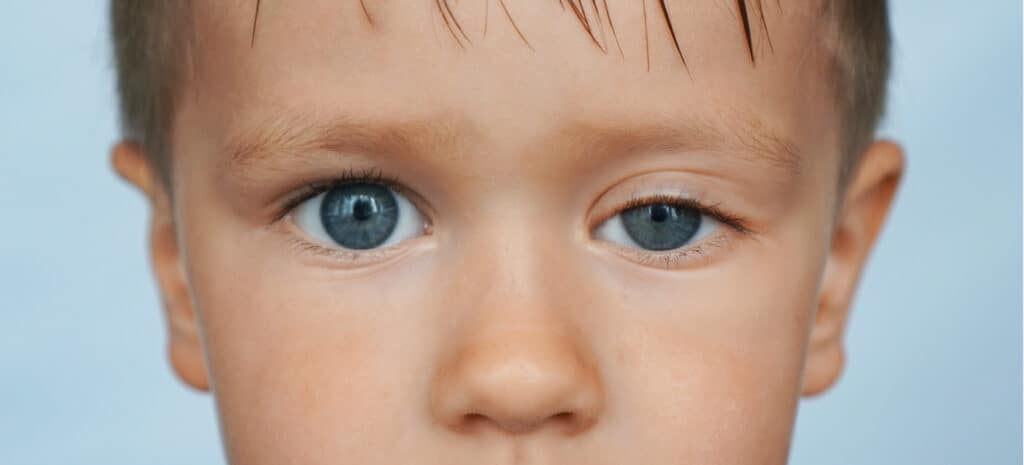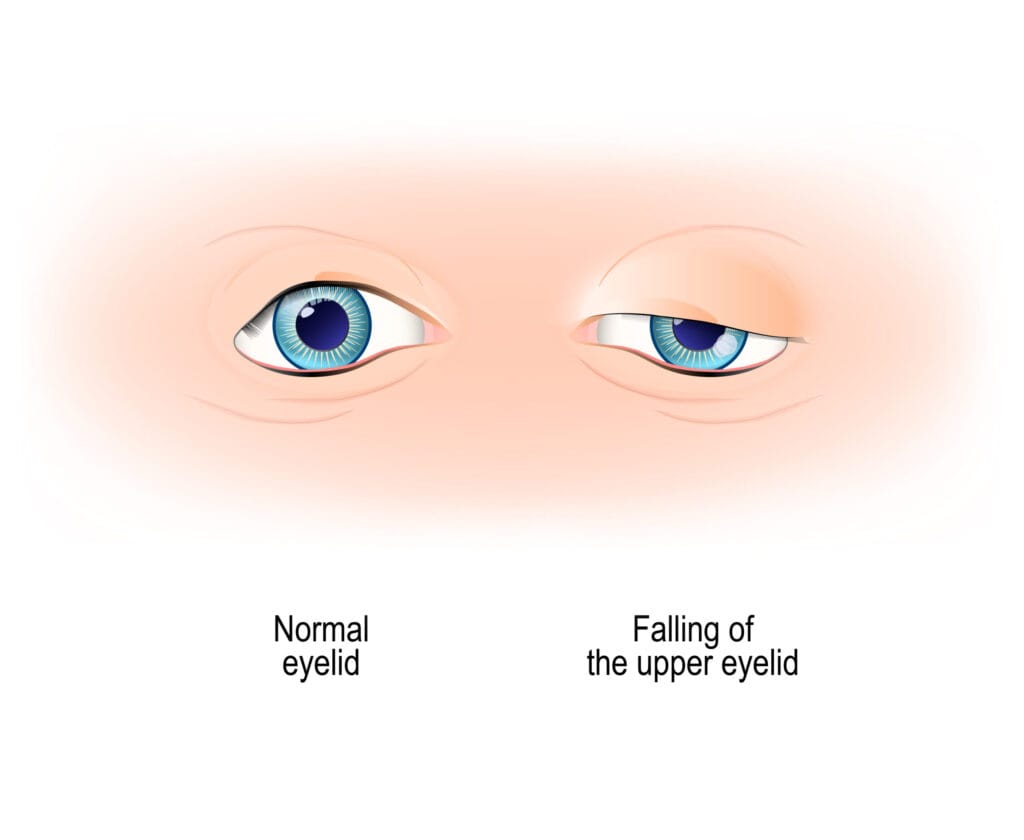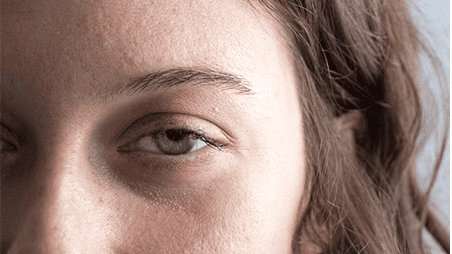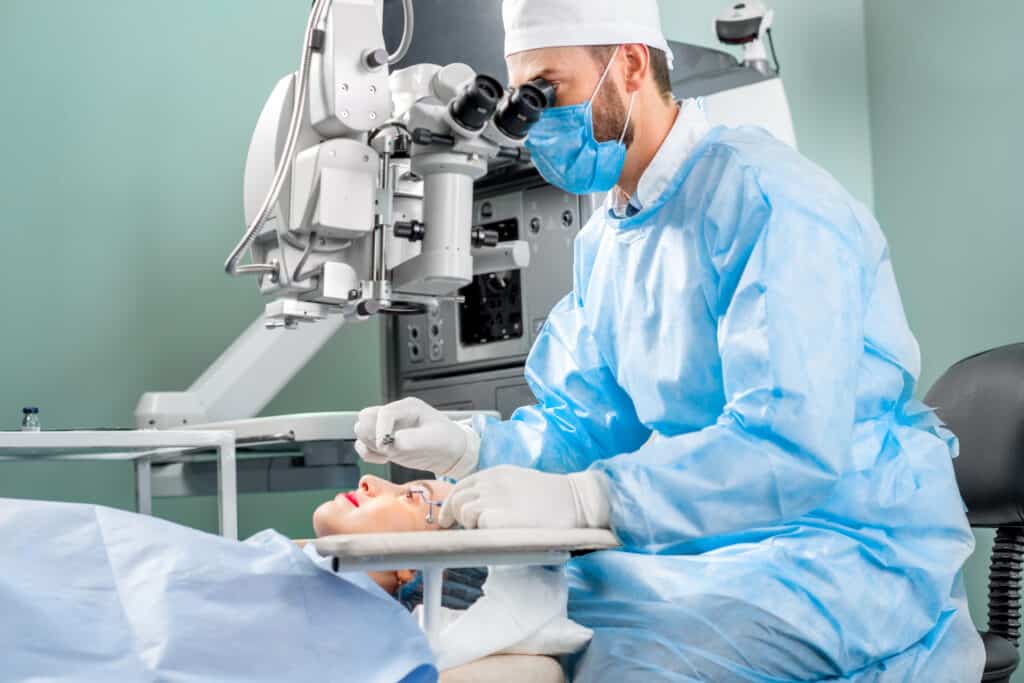Conditions
Eyelid ptosis
Ptosis causes your upper eyelid to droop over your eye.
Both children and adults can develop eyelid ptosis; however, this eye condition can be treated to improve both your vision and appearance.
What is eyelid ptosis?
Eyelid ptosis is when the edge of your upper eyelid is lower than it should be, making you look sleepy.
Ptosis, or droopy eye, can range from a slight droop to completely covering your pupil and affecting your vision.
Children with ptosis may also have other eye-related problems, such as a lazy eye, blurry vision, and misaligned or crossed eyes.
Adults can also develop ptosis due to
- Aging
- Eye injuries
- Certain eye surgeries
- Rare diseases or tumours affecting the eyelid muscle


What causes eyelid ptosis?
Congenital ptosis (droopy eyelid at birth) may be idiopathic, meaning the causes are unknown.
Other causes of congenital ptosis include the following:
- Birth trauma from the use of forceps
- Disorders affecting eye movements
- Issues related to the brain and nervous system
- Tumours or growths on the eyelids
As an adult, you could develop ptosis if the nerves that control your eyelid muscles become damaged because of the following:
- An injured or swollen eyelid
- An eye tumour
- Diabetes
- Horner syndrome
- Myasthenia gravis
- A stroke
- Aging
- Surgery like LASIK or cataract surgery
Eyelid ptosis symptoms
The main symptom of ptosis is the drooping of one or both eyelids.
In cases of severe eyelid droop, you may also do the following:
- Tip your head back and lift your chin to see better.
- Arch your eyebrows to lift your lids.
Infants and children affected by ptosis may also develop amblyopia or “lazy eye” if the lid droops too much and blocks their vision.

Eyelid ptosis diagnosis
Your ophthalmologist will be able to diagnose eyelid ptosis if drooping only happens on one side by comparing both eyelids.
However, if the drooping occurs on both sides or if it’s only a slight problem, it can be more difficult to diagnose.
To detect any progression in the problem, your eye specialist will compare the current extent of drooping with the amount shown in previous photos of your eyes.
To determine the cause of the drooping, your ophthalmologist will also perform a physical examination of both eyes.
This comprehensive eye examination may include tests such as
- A slit-lamp examination
- A Tensilon test for myasthenia gravis
- Visual field testing

Eyelid ptosis treatment
If eyelid ptosis does not affect your vision, treatment may not be necessary.
Your ophthalmologist will monitor your eyes regularly and may recommend drops, patches, or glasses to treat amblyopia.
In cases of adult eyelid ptosis, your eye specialist may also recommend a medication like oxymetazoline or surgery.
During surgery, your opthalmologist may remove extra skin or reattach and strengthen the muscle that lifts your eyelid.
Congenital ptosis often requires surgery to tighten the levator muscle or attach the eyelid to other muscles that can help lift the eyelid.
Why choose Vision Pros to treat your eyelid ptosis?
- Experienced ophthalmology team with expertise in all areas of ophthalmology, optometry, and general eye care.
- Rapid access and referral to world-class comprehensive screening and cutting-edge treatment in a state-of-the-art ophthalmology clinic.
- Holistic, personal, and patient-centric approach to every aspect of eye care.
Book an appointment for your comprehensive eye examination today
- https://www.webmd.com/eye-health/ptosis
- https://www.aao.org/eye-health/diseases/what-is-ptosis
- https://www.mountsinai.org/health-library/diseases-conditions/eyelid-drooping
- https://eyewiki.aao.org/Ptosis,_Congenital#:~:text=In%20most%20cases%20of%20congenital%20ptosis%2C%20a%20droopy%20eyelid%20results,levator%20to%20contract%20and%20relax
- https://medlineplus.gov/ency/article/003035.htm